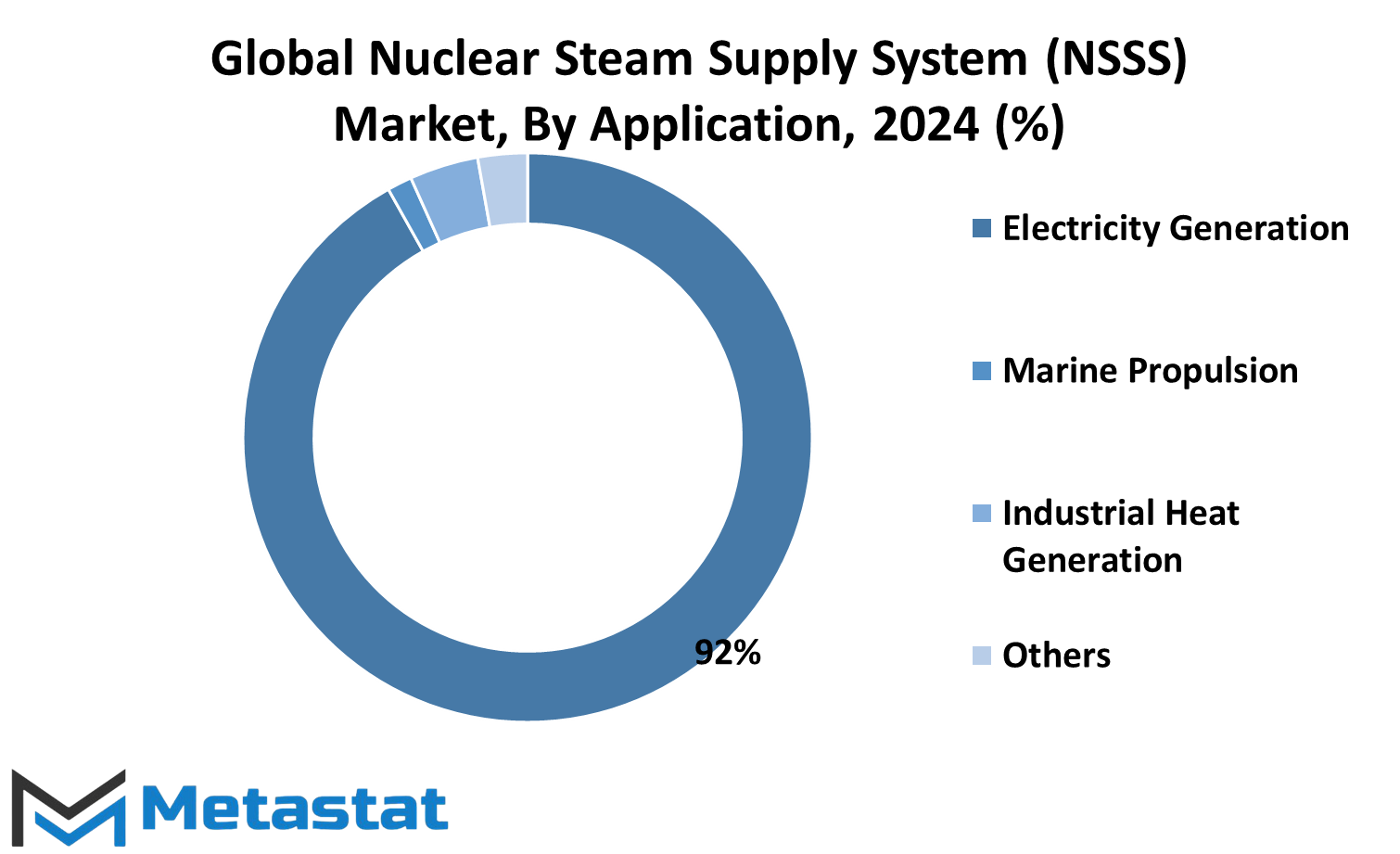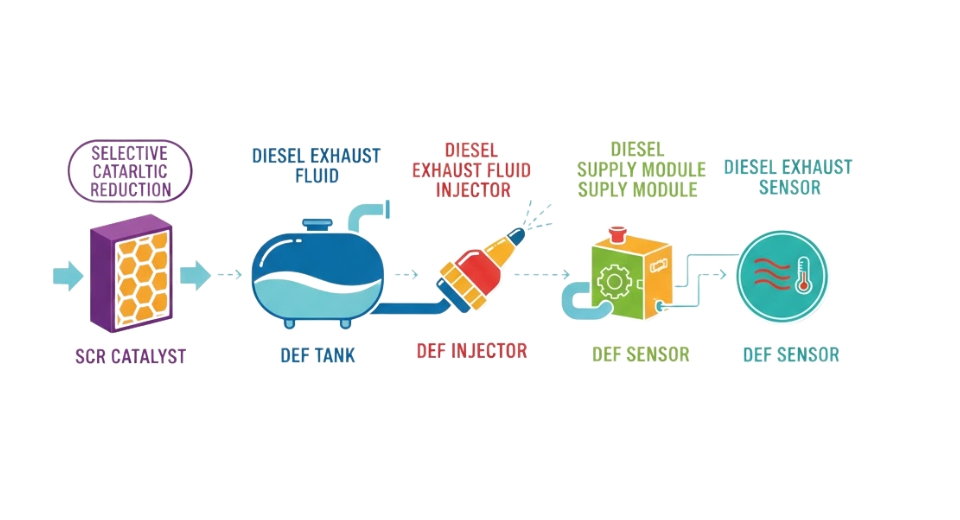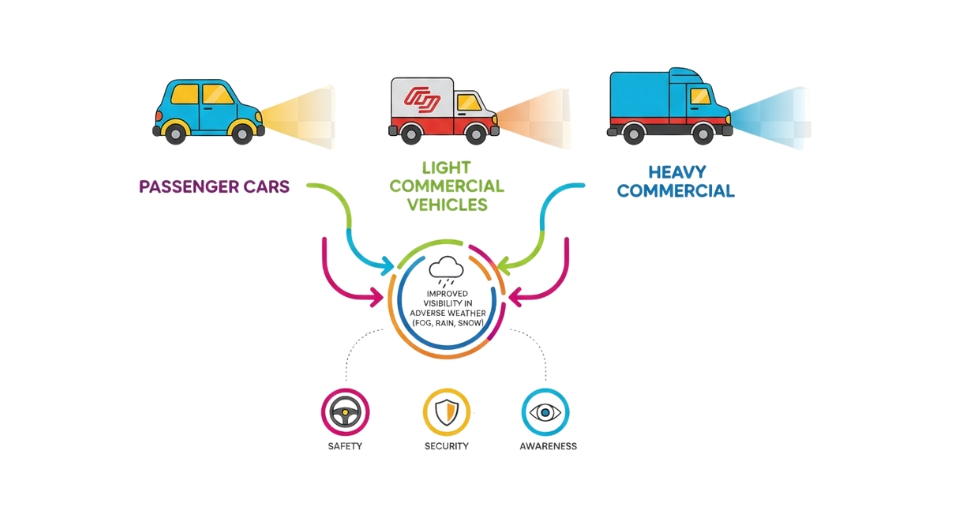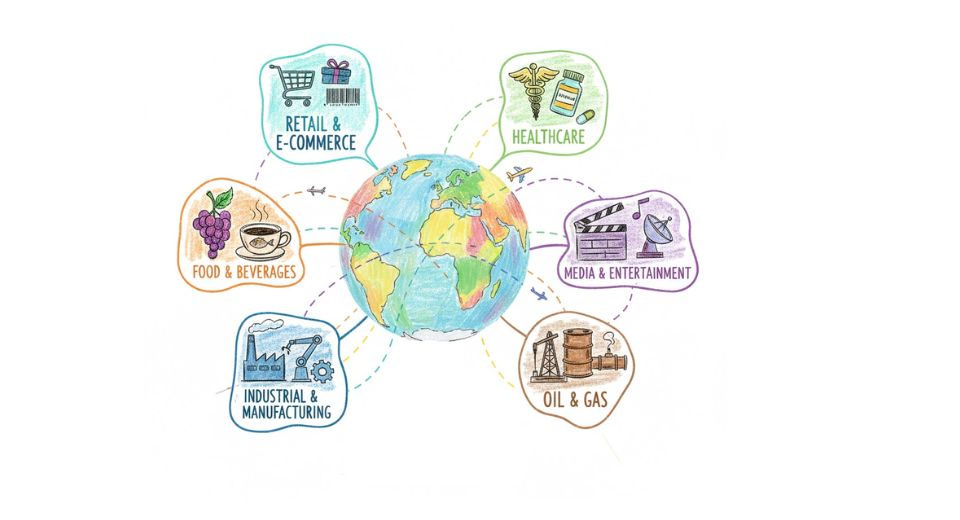MARKET OVERVIEW
The Global Nuclear Steam Supply System (NSSS) market is thriving hub of innovation and technological prowess, serving as the lifeblood for the deployment of nuclear energy worldwide. Understanding the nuances of the NSSS market requires a journey into the heart of its operations, where cutting-edge engineering converges with global energy demands.
The market is not merely a conglomeration of machinery and reactors; rather, it represents a collaborative effort of international stakeholders, engineers, and scientists working synergistically to propel the industry forward.
In the pursuit of sustainable energy solutions, the NSSS market plays a paramount role, steering the trajectory of nuclear power by virtue of its technological advancements. Reactor coolant systems, steam generators, and control systems collectively form the crux of this market, each element contributing to the efficiency and safety of nuclear power plants. Innovations in materials, design, and safety protocols continually reshape the landscape of the NSSS market, ensuring that nuclear energy remains a viable and secure option for meeting the world’s growing energy needs.
The international nature of the NSSS market is a testament to the collaborative spirit that underpins nuclear energy development. With countries across the globe investing in nuclear power projects, the market becomes a global tapestry, interwoven with diverse cultures, regulations, and geopolitical considerations. The challenges faced by the NSSS market are as varied as the countries It serves, ranging from regulatory compliance to public perception, each adding layers of complexity to its operational landscape.
As the world grapples with the imperative to transition towards sustainable energy sources, the NSSS market stands at the crossroads of technological innovation and environmental responsibility. It is a catalyst for change, a driving force behind the evolution of nuclear power from a conventional energy source to a more efficient, safer, and environmentally conscious option.
Global Nuclear Steam Supply System (NSSS) market is estimated to reach $8278.4 Million by 2031; growing at a CAGR of 1.9% from 2024 to 2031.

GROWTH FACTORS
The Global Nuclear Steam Supply System (NSSS) market experiences growth due to several key driving factors. These factors play a pivotal role in propelling the market forward. However, certain challenges might pose obstacles to the market's growth trajectory. It is crucial to recognize that both growth factors and hindrances are inherent components of this market landscape.
Among the driving forces that fuel the expansion of the NSSS market, one notable factor is the increasing demand for nuclear energy. The global focus on sustainable and clean energy sources has heightened interest in nuclear power, contributing to the market's positive momentum. Additionally, technological advancements in nuclear steam supply systems enhance their efficiency, further driving market growth.
Nevertheless, it is important to acknowledge potential obstacles that could impede the market's progress. Regulatory constraints and safety concerns are factors that demand careful consideration. Stricter regulations and safety issues might create challenges for the NSSS market, hindering its growth potential.
Despite these challenges, the market remains dynamic and resilient. Opportunities arise in the form of technological innovations and the continuous evolution of nuclear energy solutions. As advancements address safety concerns and regulatory compliance, the NSSS market is poised to capitalize on lucrative prospects in the coming years.
The Global Nuclear Steam Supply System market is influenced by a combination of growth factors and challenges. The increasing demand for clean energy and technological advancements drive market expansion, while regulatory constraints and safety concerns pose potential hurdles. However, the market's ability to adapt to evolving circumstances and capitalize on emerging opportunities underscores its resilience and potential for sustained growth.
MARKET SEGMENTATION
By Reactor Type
The Global Nuclear Steam Supply System (NSSS) market can be broken down by Reactor Type, and within this category, there are distinct segments. One such segment is the Pressurized Water Reactor (PWR). In 2022, the Pressurized Water Reactor segment held a value of 4434.8 USD Million. This specific type of reactor plays a notable role in the nuclear energy landscape.
Another type of reactor within the market is the Boiling Water Reactor (BWR). In the same year, the Boiling Water Reactor segment had a value of 1377.5 USD Million. This type of reactor operates differently from the Pressurized Water Reactor, highlighting the diversity within the nuclear steam supply system market.
Additionally, there is the Pressurized Heavy Water Reactor (PHWR), which adds to the array of reactor types in this industry. The market dynamics for this segment contribute to the overall landscape, providing alternatives and options for various applications.
Moreover, the market encompasses other reactor types, showcasing the multifaceted nature of the Global Nuclear Steam Supply System market. This diversity reflects the continuous evolution and adaptation within the nuclear energy sector.
The valuation of these segments in terms of USD Million not only quantifies their significance in the market but also serves as a metric for understanding the economic aspects associated with different reactor types. The numbers represent the economic value these segments bring, underlining their individual contributions to the overall NSSS market.
The Global Nuclear Steam Supply System market, categorized by Reactor Type, demonstrates a nuanced and varied landscape. The Pressurized Water Reactor, Boiling Water Reactor, Pressurized Heavy Water Reactor, and other segments collectively shape the market, each with its distinct characteristics and economic significance. This segmentation provides stakeholders and industry observers with a comprehensive understanding of the diverse reactor types fueling the global nuclear energy sector.
By Applications
The Global Nuclear Steam Supply System (NSSS) market is segmented based on its applications, categorizing it into Electricity Generation, Marine Propulsion, Industrial Heat Generation, and Others.
The Electricity Generation sector plays a pivotal role in the NSSS market, serving as a primary application. Nuclear power plants generate electricity by harnessing the heat produced during nuclear fission reactions. This process involves splitting atoms to release energy, which is then converted into electricity through a steam turbine-driven generator. The significance of nuclear energy in meeting the world’s growing electricity demand is evident, considering its role in providing a reliable and continuous power supply.
Marine Propulsion represents another vital application of NSSS technology. Nuclear propulsion has proven to be advantageous in the maritime industry due to its ability to offer extended operational range and endurance. Nuclear-powered ships, such as submarines and aircraft carriers, leverage NSSS to generate steam and propel the vessel, providing a sustainable and efficient means of maritime transportation.
In the Industrial Heat Generation, the NSSS market finds applications beyond electricity production. Industries that require a significant amount of heat for various processes can benefit from nuclear steam supply systems. The controlled release of steam generated by NSSS contributes to industrial processes like manufacturing, refining, and chemical production, enhancing efficiency and reducing environmental impact.
The others category encompasses diverse applications where NSSS technology finds utility beyond the sectors. This broad classification may include research facilities, district heating systems, or specialized industrial processes that leverage nuclear steam supply for specific requirements.
The Global Nuclear Steam Supply System market showcases versatility through its applications in Electricity Generation, Marine Propulsion, Industrial Heat Generation, and other miscellaneous sectors. Each application brings unique advantages, highlighting the adaptability and significance of NSSS technology across various industries. As the demand for sustainable and efficient energy solutions continues to rise, the role of NSSS in shaping the future of power generation and industrial processes remains a noteworthy aspect of the global energy landscape.

REGIONAL ANALYSIS
The analysis of the Global Nuclear Steam Supply System (NSSS) market on a regional level provides valuable insights into the specific dynamics and trends shaping the industry in different geographical areas. This approach allows for a more nuanced understanding of the market's performance and potential opportunities.
When we delve into regional analysis, we are essentially examining how the NSSS market is faring in distinct parts of the world. This helps stakeholders, including investors and businesses, to tailor their strategies based on regional variations and demands. In simpler terms, it's like zooming in on different sections of a map to see what factors are influencing the NSSS market in those specific locations.
Each region has its own unique characteristics, economic conditions, and regulatory frameworks that can impact the adoption and growth of nuclear steam supply systems. For instance, what might be driving the market in one region could differ from the factors influencing it in another. This regional breakdown is akin to looking at a puzzle and understanding how each piece contributes to the overall picture.
Understanding regional dynamics is crucial because it allows businesses to adapt to local conditions, making their products or services more relevant and appealing to the target audience. It's a bit like recognizing that people in different places have distinct preferences – what works in one area might not be as effective in another.
Moreover, regional analysis helps identify potential challenges or risks that may be specific to certain areas. For instance, regulatory changes in one region could have a significant impact on the NSSS market, influencing how businesses operate and make decisions.
Delving into regional analysis of the Global Nuclear Steam Supply System market provides a closer look at how this industry is evolving in different parts of the world. This approach allows for a more informed and tailored approach to navigating the complexities of the market, ensuring that businesses can adapt and thrive in diverse regional landscapes.
COMPETITIVE PLAYERS
In the Global Nuclear Steam Supply System (NSSS) market, several noteworthy players drive the pulse of the industry. Among these key contributors are Westinghouse Electric Company LLC., GE Hitachi Nuclear Energy (GEH), Mitsubishi Heavy Industries, Ltd., The State Atomic Energy Corporation ROSATOM, China National Nuclear Corporation (CNNC), Framatome, KEPCO Engineering & Construction Company. INC, Toshiba Corporation, Bharat Heavy Electricals Limited (BHEL), and Rolls-Royce plc.
Westinghouse Electric Company LLC. stands tall as a prominent player, leveraging its expertise to shape the trajectory of the NSSS industry. Its commitment to innovation and reliability has solidified its position as a cornerstone in the market. Similarly, GE Hitachi Nuclear Energy (GEH) brings a wealth of experience, contributing to the competitive dynamics of the sector with its cutting-edge solutions and technological advancements.
Mitsubishi Heavy Industries, Ltd. is another notable participant, showcasing its prowess in engineering and manufacturing within the NSSS domain. The State Atomic Energy Corporation ROSATOM, a key player with a global footprint, plays a pivotal role in shaping the nuclear energy landscape. With a commitment to excellence, ROSATOM contributes significantly to the NSSS market's vibrancy.
China National Nuclear Corporation (CNNC) emerges as a powerhouse in the industry, with its strategic initiatives and forward-thinking approach. As a major player, CNNC not only influences the domestic market but also makes a substantial impact on the global NSSS landscape. Framatome, with its comprehensive portfolio of nuclear solutions, is an integral part of the competitive milieu, offering diverse and reliable NSSS options.
KEPCO Engineering & Construction Company. INC, Toshiba Corporation, Bharat Heavy Electricals Limited (BHEL), and Rolls-Royce plc complete the ensemble of key players, each bringing its unique strengths to the NSSS market. From engineering prowess to technological innovation, these players collectively shape competitive dynamics, driving advancements and ensuring a robust and dynamic industry landscape.
The Global Nuclear Steam Supply System (NSSS) market thrives on the contributions of these key players. Their individual strengths, coupled with a shared commitment to excellence, collectively propel the NSSS industry forward, ensuring a dynamic and competitive market landscape.
Nuclear Steam Supply System (NSSS) Market Key Segments:
By Reactor Type
- Pressurized Water Reactor (PWR)
- Boiling Water Reactor (BWR)
- Pressurized Heavy Water Reactor (PHWR)
- Others
By Applications
- Electricity Generation
- Marine Propulsion
- Industrial Heat Generation
- Others
Key Global Nuclear Steam Supply System (NSSS) Industry Players
- Westinghouse Electric Company LLC.
- GE Hitachi Nuclear Energy (GEH)
- Mitsubishi Heavy Industries, Ltd.
- The State Atomic Energy Corporation ROSATOM
- China National Nuclear Corporation (CNNC)
- Framatome
- KEPCO Engineering & Construction Company. INC
- Toshiba Corporation
- Bharat Heavy Electricals Limited (BHEL)
- Rolls-Royce plc
WHAT REPORT PROVIDES
- Full in-depth analysis of the parent Industry
- Important changes in market and its dynamics
- Segmentation details of the market
- Former, on-going, and projected market analysis in terms of volume and value
- Assessment of niche industry developments
- Market share analysis
- Key strategies of major players
- Emerging segments and regional growth potential








 US: +1 3023308252
US: +1 3023308252






